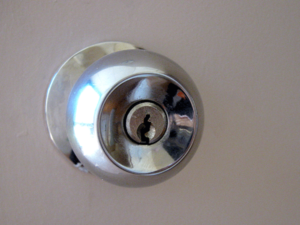I got suspicious when Lauren’s chat bubbles turned green. She used an iPhone, so when we kept in touch over text, it was via iMessage, which uses blue chat bubbles. When one of those bubbles turns green, that means it was sent over SMS, old school. There are a number of reasons this could happen, but seeing those green bubbles, coupled with a complete lack of response, and a noticeable absence spanning several months, I got suspicious.
I had hoped it wasn’t true, but sure enough, the top search result for her name was her obituary.
It took me a little while to piece it all together. The article said she died back in February—five months before I found out—but it didn’t feel like I had last talked to her that long ago. I scrolled back through the unanswered green bubbles and discovered that we last conversed just three days before an irresponsible driver crashed into her boyfriend’s car on the highway. That I last spoke with her so close to her death is the one bit of fortune I’ve felt about the whole tragedy.
Lauren was a friend whom I had known primarily on the internet. We first met way back when LiveJournal was a thing that people legitimately used. It was kind of a weird time when personal blogging was still underground (they didn’t even call it blogging yet). It was a time when your life could be public-yet-private; it wasn’t the big personal-brand–self-promotion machine that we often find with social networks today. It was easy to get personal, and to learn the intimate workings of another person’s mind. It was through these weird little daily journal entries and comment sections that Lauren and I kindled a friendship. As time progressed, the communication channels changed, but we stayed connected through it all. Not just following one another from service to service, but following up, checking in, doling out advice, providing comfort, and celebrating wins.
Lauren was a close and enduring friend of mine. We had known each other for more than a decade. That’s longer than I’ve had my dog. Longer, in fact, than I’ve known most of my closest IRL friends. She was a welcome, if nearly invisible, presence in my life. So, when I found out about her passing five months after the fact, and only through cleverness on my part, I have to admit that it stung fiercely. But I get it. Just as she flew under the radar among my family and friends, I was just positive her loved ones would have no idea who I was. (I did write her parents a letter expressing my sadness and condolences and, thankfully, they shared it with her best friend, who reached out and said that she did know about me. It was a big relief.)
Living on the internet has certainly felt surreal at times, and perhaps nothing is more surreal than when someone you mostly know through pixels passes away. There’s just not a standard cultural protocol to expect. I think it’s worth considering how the friends your friends don’t know about can get news of your passing.
In the past, I’ve talked casually with my brother about how I want him to tell my online friends when I die, but having been affected by just such an event so recently, it spurred me to actually put how that should work into writing. With that in mind, here are some ideas I have if you’d like to do the same thing.
Get a Password Manager
A password manager is not only a great idea for your personal security (and sanity), it can also provide the keys to your online identity after your death. It can sometimes be harder to gain access to a deceased person’s gaming account than it can be to get the title to their home! I use a password manager called 1Password. It stores websites and their corresponding usernames and passwords behind a secure master password. It also has browser plug-ins that automatically log in for you. And that’s just the tip of the iceberg. You’ll hear more about what you can do with a password manager to manage your online identity postmortem later on in this article.
If you don’t want to buy a password manager, you can use Apple’s Keychain to keep track of your logins. I’ve just never found it to be quite as intuitive to fit into my workflow.
Your password manager is protected by a master password, that way your passwords can’t be accessed by just anybody. But there’s the issue of getting the master password to the people who need it. You won’t exactly be in a position to let them know what it is yourself, after all.
It’s never a good idea to share your passwords with anybody else, but I’m fortunate enough to have someone whom I can trust with it implicitly. He has my passwords written down—in a secure note in his password manager, of course! (You’ll learn more about secure notes later on in this article.) But this only works as long as one of us survives the other. If (heaven forbid) we happen to go at the same time, I realistically need a better back-up plan.
Get a Safe Deposit Box
I think a safe deposit box is ideal. These are incredibly secure lock boxes that are stored inside a bank’s vault, and they’re pretty inexpensive to rent. The last one I had cost about $6 per year. I stored other important things in there, too, like my car title and passport.
And you’ll feel super-cool anytime you get to go into the vault, turn the two keys simultaneously, and go into the little private room to rummage through your box.
Some people have a personal safe, which can work, too, but then you’ll need to somehow pass on the combination for that, too. Like in a safe deposit box!
Create a Secure Note
As I said before, you can do a lot more with 1Password than just keep track of passwords. In particular, you can create secure notes. These are simple text documents like you’d write in any plaintext editor, but they’re stored securely behind your master password. I’ve written up a secure note that has all the instructions necessary to take care of my digital affairs.
I’ve covered a number of things, and I intend to keep adding more as I think of them, or as my life continues to change and evolve. After all, who knows if I’ll outlive Facebook or if Facebook will outlive me. Here are a few things you may want to think about when you write yours:
- Who should manage, clean up, organize, and back-up your computer?
- What should happen to your website? Do you want a memorial posted somewhere on it? Additionally, somebody’s gotta keep paying the domain and web hosting fees. Are you setting aside some money to keep this going, or would you prefer it be shut down and archived privately?
- Who should know about this explicitly? This could be specific people that you’re emotionally close to, or a general social network. I’ve personally written up three tweets to go out to my Twitter followers. That way my family will post exactly the information I’d like my followers to know. Should your Facebook friend list, YouTube subscribers, or your Snapchat followers also know? Write down in your note how you want that to play out.
- Additionally, Facebook can memorialize your account. You can explicitly choose a friend who has the power to make that happen. After an account has been memorialized, it can’t be edited ever again. This is another good reason to make your password available through a password manager. Your family can then go in and remove any embarrassing status updates they don’t want forever associated with your name before they memorialize your account. I’ve even told my family to change my photo to something “non-cheesy” where I “look kinda cool”, just so I can look my best after my final rest.
There are probably other things you can do that I haven’t thought about yet, but this is going to be a personal process, no matter what. You might find certain things to be way more important than other things, and your needs may change and evolve over time. It’s up to you to make sure your note is current with your wishes.
Talk to Your Lawyer
All this said, it’s a good idea to talk to a real, live lawyer, too. I haven’t done this yet. Despite this article, I haven’t actually put a lot of consideration into my physical assets at this time. But if you’ve already got a will drawn up, or you’re planning one now, you’re going to want to make sure it has all the information about your digital life included in it, too.
I feel better knowing that all of my friends will know when I’ve died, including the ones I’ve never met IRL. My virtual friends are just as important to me, but it doesn’t help if nobody knows who to tell, or what to say. Taking some time to reflect on which sites and services are important to you will give peace of mind to yourself, as well as those who survive you.



